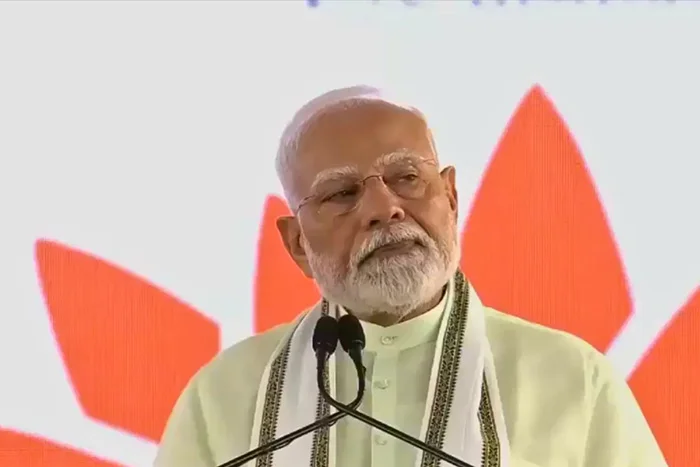
What will the rise of artificial intelligence (AI) mean for India? In the AI era, can the country still rely on low labour costs to propel industrialisation and modernisation? And can India, which has been praised for its software prowess, seamlessly extend that advantage into the age of AI? These questions warrant close examination. They not only bear lessons for China’s own industrial and technological prospects but also touch on certain geopolitical considerations in the future. In recent discussions with some Indian friends and from observing some heated debates online, it appears to me that many in India hold an optimistic view of AI.
A prevailing belief is that India can simply parlay its existing strengths in computer programming and outsourced services into a new AI-driven era, capitalising on its talent pool and existing industry prowess. Yet, from my vantage point—particularly informed by China’s and the United States’ experiences in industrial and technological development so far—such a linear extrapolation may not hold water. In fact, I would argue that India could be among the most significantly disrupted countries worldwide as AI gathers speed, facing a range of unanticipated challenges and upheavals.

For the US, the substantial benefits of AI are readily apparent. From a macroeconomic standpoint, the country has grappled with rising labour costs in recent years, eroding the overall competitiveness. In theory, AI-powered automation could lower operating expenses across the board and even help realise the long-coveted “manufacturing renaissance”.
From a grand geopolitical and economic perspective, AI is very much viewed as America’s own “wunderwaffe”, a miracle weapon that Washington believes will safeguard its competitiveness in technology, industry, and finance. It also offers the US the potential to lean more heavily on AI in finance, media, and entertainment—areas in which it can continue to attract talent, capital, and resources from around the world. From China’s perspective, there are also high hopes for AI.
In the near term, China’s manufacturing sector—which has historically been its strongest comparative advantage—faces less direct impact from AI than many service-based industries. Instead, AI may actually boost efficiency by facilitating further automation and smart manufacturing. Meanwhile, just as in the US, AI-driven initiatives such as smart cities and autonomous vehicles could help alleviate China’s increasing labour shortages, plugging a looming gap in its economy.
Moreover, the emergence of Deepseek has demonstrated that China is entirely capable of developing AI at the global cutting edge. Rather than worry about being isolated technologically, China is poised to share in the investment boom unleashed by AI—alongside the US. India, however, faces a drastically different situation than either the US or China.
Thus, its greatest challenge in the AI era may lie in having to endure the costs of AI’s disruptive impact without being able to fully reap its rewards. First, India’s economic structure and industrial profile make it unusually vulnerable to AI shocks. The country’s economy is dominated by service industries, and consumer spending remains the largest driver of growth.
Should AI displace jobs in India’s pillar service businesses, such as call centres and basic programming—low value-added services on which India heavily depends—the fallout could trigger a rapid cascade of negative effects, potentially sparking a downward spiral. Indeed, the country’s latest economic survey has sounded an alarm: if job losses in outsourcing and labour-intensive programming lead to a drop in consumer spending, that in turn would hamper businesses elsewhere, fuelling yet more layoffs, and could provoke a broader systemic crisis. Second, India’s demographic dividend may be neutralised by the levelling effect of AI.
India’s status as the world’s most populous nation has long been regarded as a crucial advantage, anchored by the belief that a young workforce can power the country’s economic take-off. But as AI-enabled automation proliferates globally, India will find itself competing not only with peers like Vietnam but also with more advanced economies equipping even more AI. The barriers to pushing industrialisation through labour-intensive sectors are growing, raising the possibility that India might miss the opportunity again.
Third, India currently lacks the technical capacity for AI—in the near term, the country is unlikely to produce homegrown AI breakthroughs and will instead have to rely on existing American and Chinese platforms for any innovations at the application layer. Consequently, India as a whole has limited prospects of benefiting from the AI investment boom—though individual engineers and managers may still find new opportunities popping up, any broader economic benefit is likely to be marginal. Still, as the world’s largest country by population, India can leverage its sheer scale to extend AI’s conveniences widely and at relatively low cost—whether in areas such as public services, government transparency, or the efficiency of service delivery.
From that standpoint, AI does offer India a significant potential upside. Recently, the Indian government launched a $1.25 billion “National Program on AI”, and in January, Ashwini Vaishnaw, the Minister of Electronics and Information Technology, revealed that India’s foundational Large Language Model (LLM) would be ready within a few months, specifically tailored to accommodate India’s diverse cultures and languages.
All in all, the comparative advantages India enjoyed in the software era will not automatically carry over into the AI era. To adapt to the new landscape of AI-driven industrial and technological competition, India must improve its basic capabilities. Only by strengthening its own industrial foundations can the country better seize the opportunities—and manage the disruptions—of the AI age.
The author is a Chinese scholar from Harvard University and one of the foremost ‘India watchers’ among the new generation. The views expressed in the above piece are personal and solely those of the author. They do not necessarily reflect Firstpost’s views.
.















